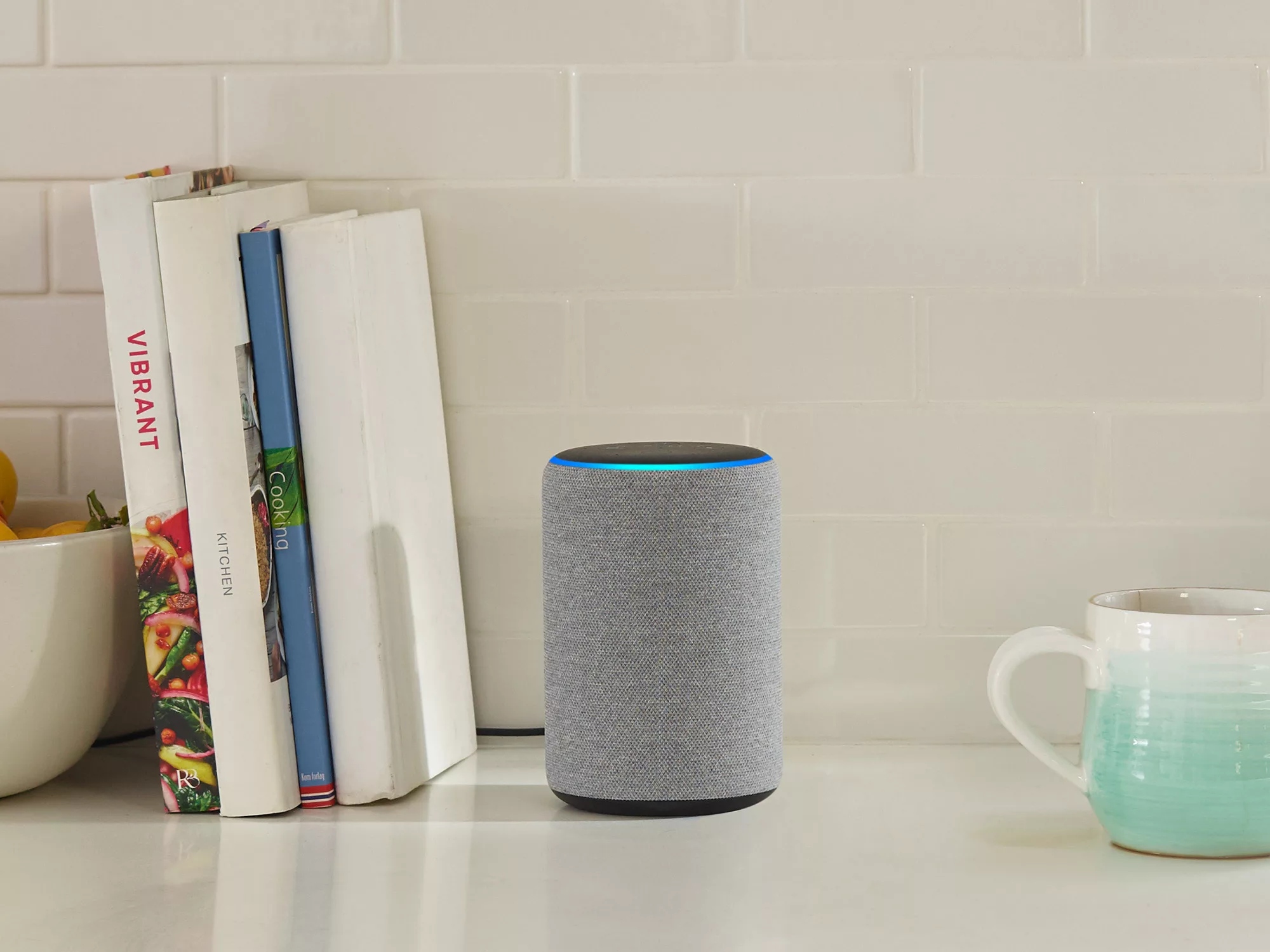
Which Amazon Echo do I have?
Given Amazon keeps refreshing its range of Echo smart speakers every year, it can be hard to keep up with which one you have.
If you’re not sure which Amazon Echo you have, the easiest way of finding out is logging into your Amazon account and checking your past orders. Just type “Echo” into the search bar and everything will come up as below… assuming you bought from Amazon, of course.
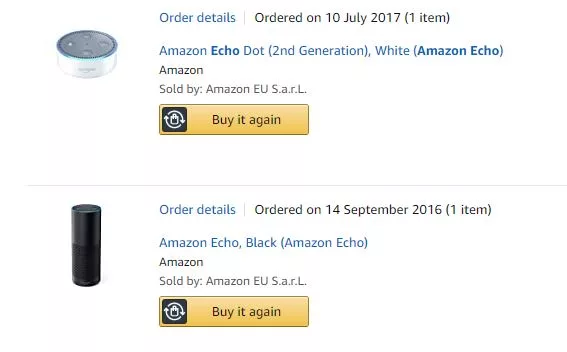
If not, here’s a rough-and-ready guide to figuring out what Echo you’re packing in your home.
Which Amazon Echo do I have?
If it’s short and puck-shaped, you’ve got an Echo Dot.
There are three generations of Echo Dot – and realistically you only have a second or third generation model, because the first-generation version wasn’t released in the UK. But for completeness’ sake, this is what it looks like:
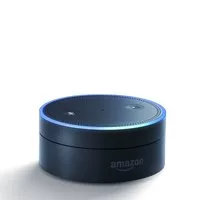
You’re far more likely to have one of the latter two. The second-generation version is hard plastic and has an Amazon logo embossed on the side next to the volume-down button. The third-generation version is more rounded, and has a fabric covering around the side with no Amazon logo. In truth, it’s pretty hard to get them confused.
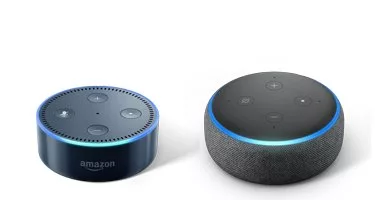
There’s one final version: The Echo Dot with Clock. This looks identical to the third-generation model when switched off, but has an LED clock face when switched on, which is something of a giveaway. It’s also only available in the sandstone colour scheme.
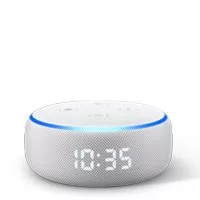
If it’s tall and plastic, you’ve got a first-generation device
The original Echo was a tall plastic cylinder with a top that rotates to adjust the volume. This has gone out of style now, and Amazon doesn’t make ‘em like this any more.
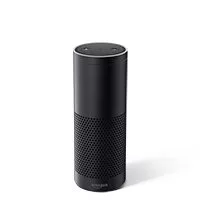
BUT there is one other possibility. You might have a first-generation Echo Plus, which looked identical but offered better sound quality and a built-in smarthome hub. According to Amazon, the only difference in form is the weight, with the Echo Plus weighing 954g to the original Echo’s 1,064g – I’m afraid you may have to get the scales out.
If it’s fabric covered, you’ve got a second or third generation Echo
Amazon added a fabric covering to the shorter, dumpier Echos from the second generation onwards. Imagine a slightly stretched-out tin of baked beans and you’ve got a rough idea of the dimensions.
At a glance, the second and third generation Echos look pretty similar, but there are differences. Most tellingly, the second-generation version keeps a small Amazon logo on the front near the bottom. This is dropped for the third, which also has a more rounded top.
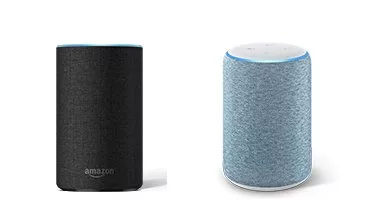
But once again, Amazon has been mighty unhelpful and made the second-generation Echo Plus look exactly like the third-generation Echo. This time, however, there is a quick way of telling: turn over the Echo Plus and you’ll find a small Zigbee logo, which isn’t present on the third-generation Echo.
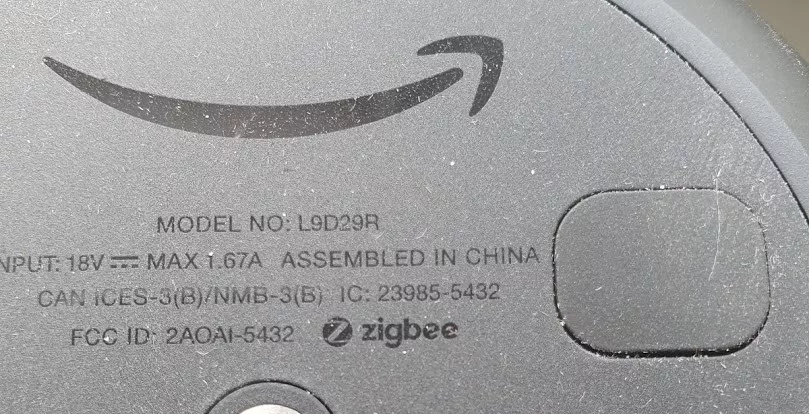
What if it’s something else altogether?
Amazon has made a whole bunch of other Echoes, so if yours doesn’t look like anything above, it’s probably one of these.
The Echo Sub is a massive chunky subwoofer that attaches to other devices to add bass. It’s pretty nondescript and won’t work on its own.
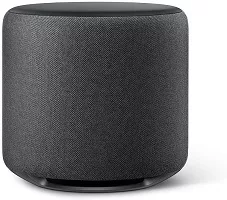
The Echo Studio is the top-of-the-range Echo compatible with Dolby Atmos and Sony 360 Reality Audio. It’s big and chunky, but the big giveaway is the cutout near the bottom of the device, which is intended to “maximise bass reproduction”.
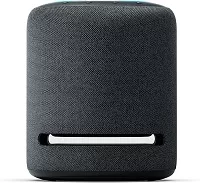
The Echo Flex, meanwhile, just looks like a plug. Because that’s what it is.
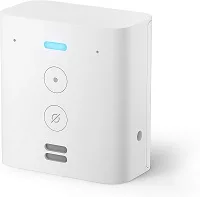
More explainers
NEXT UP

Ryan Beal, CEO & Co-Founder of SentientSports: “Sports generate some of the richest datasets globally”
We interview Ryan Beal, CEO & Co-Founder of SentientSports, a startup using AI in fan engagement and athlete protection on social media.

Paris 2024: The greenest games ever
How the Paris 2024 Olympic Gamers organisers have lived up to their promise that this is the greenest Olympics ever

Salesforce, Workday team up to launch AI employee service agent
Salesforce and Workday have marked their new strategic partnership with the launch of an AI-powered assistant to handle employee queries.

